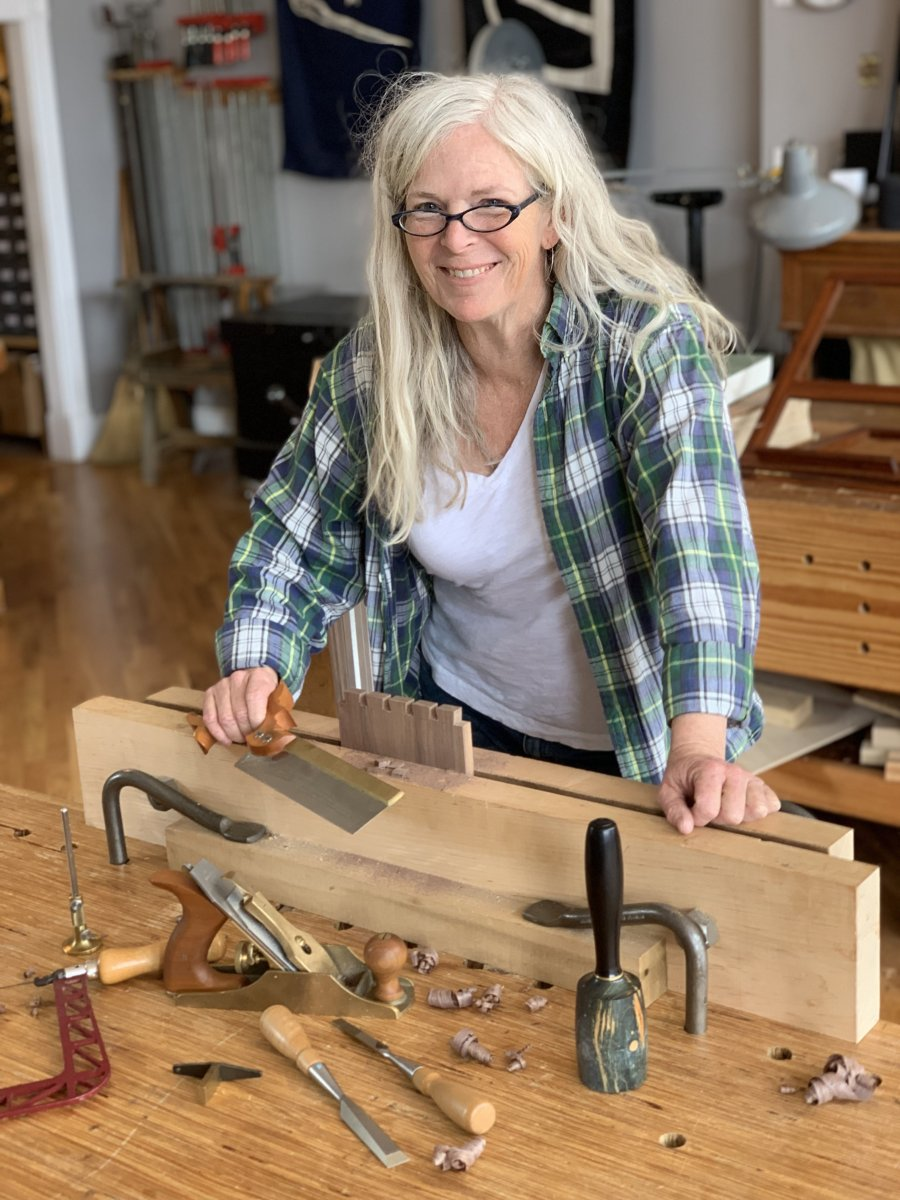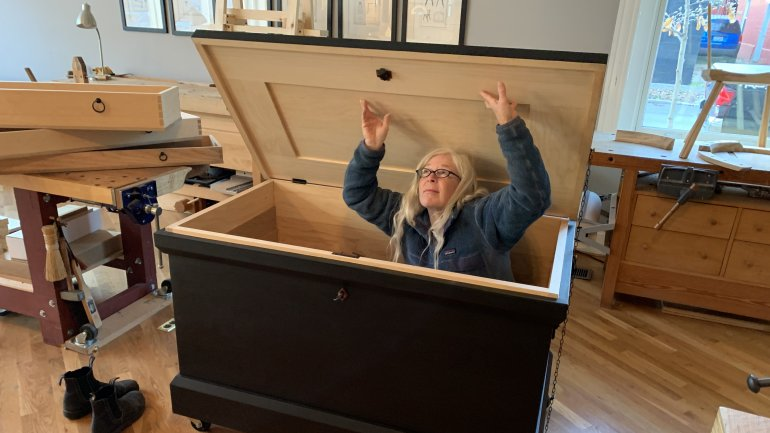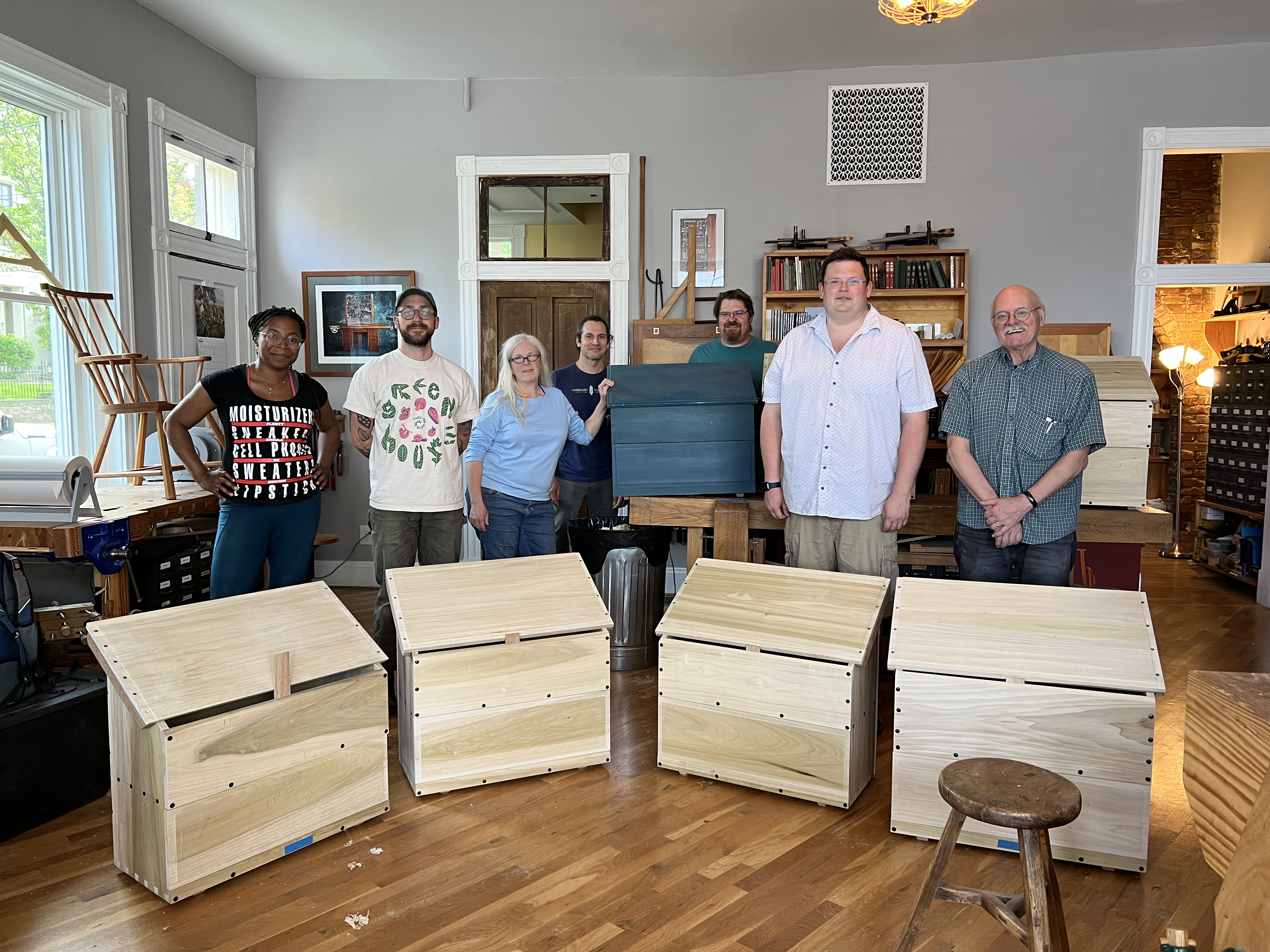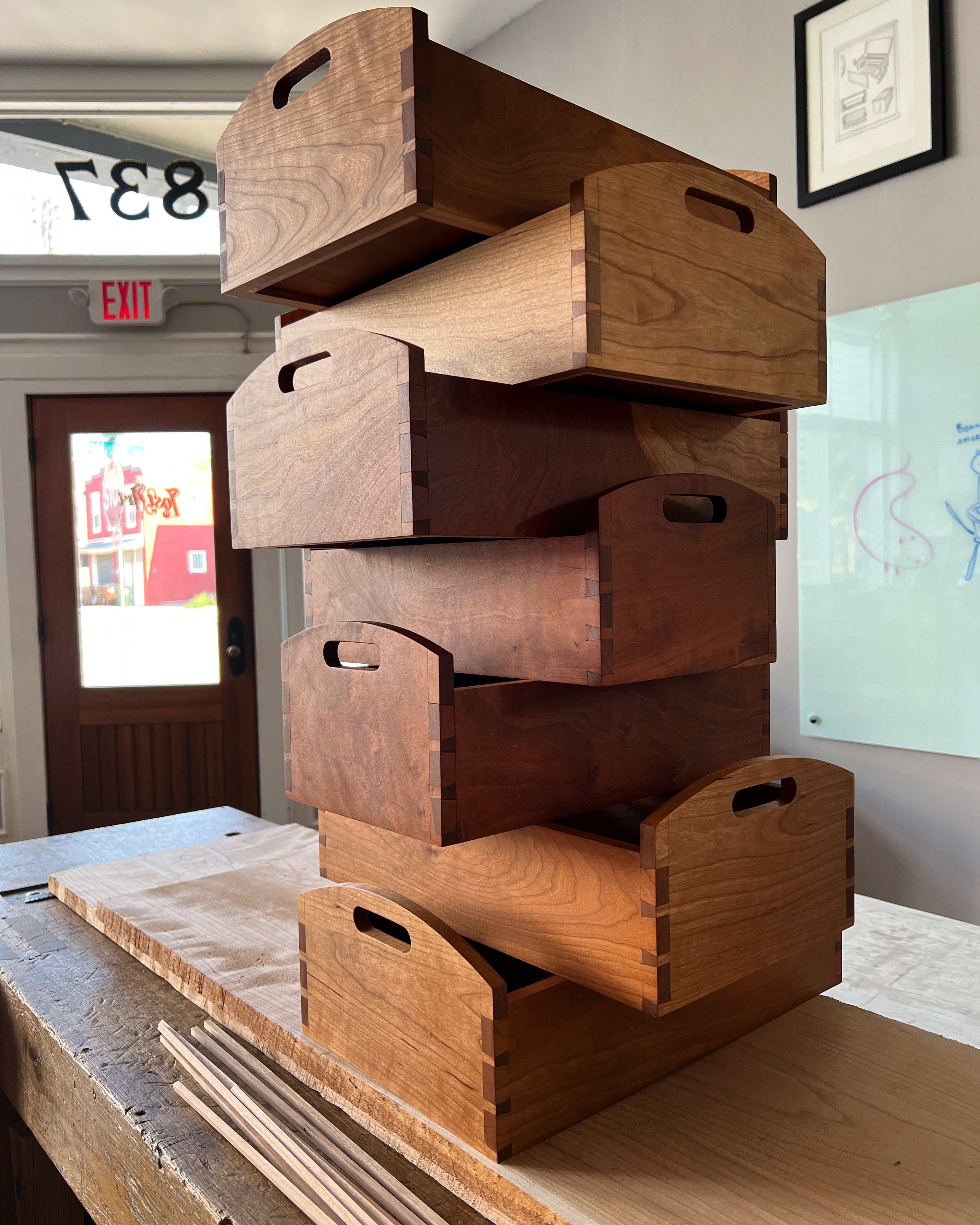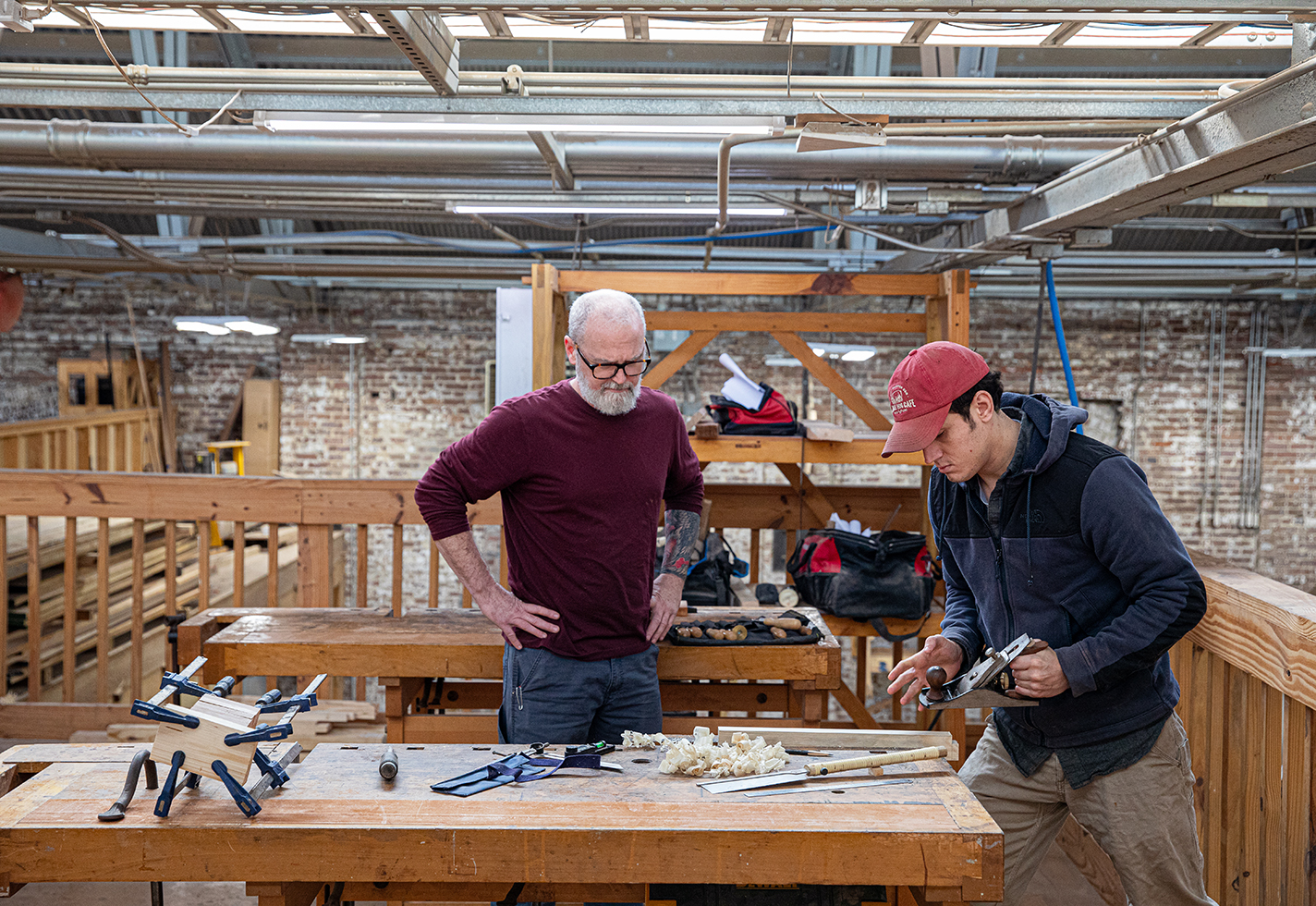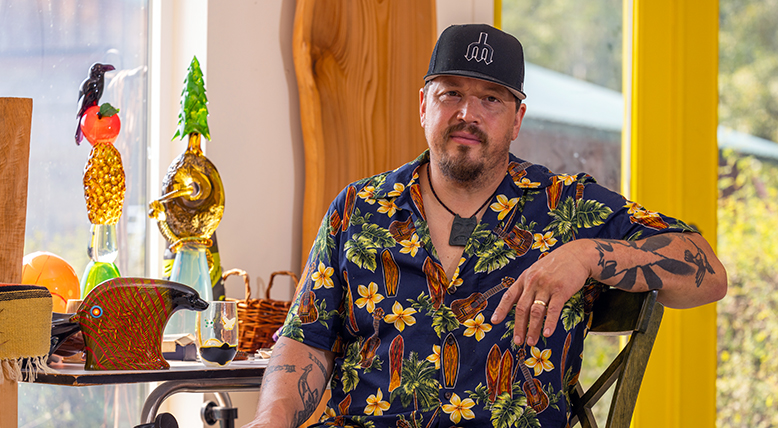Wood and words commune in Megan Fitzpatrick’s multi-pronged practice.
Megan Fitzpatrick has long been a teacher. She pursued a PhD in Shakespearean literature at the University of Cincinnati and taught English classes there while moonlighting as an editor at Popular Woodworking. Her encounters with woodworking shaped her life in ways she couldn’t have imagined. “I planned to resign from the magazine once I finished my PhD, to go off to teach Shakespeare,” she says. “Instead, I resigned from academia when I fell in love with woodworking.” Longtime colleague and collaborator Christopher Schwarz, the cofounder and publisher of the decidedly old-school Lost Art Press, hired her as editor there in early 2022. Fitzpatrick teaches woodworking classes at Lost Art’s Covington, Kentucky, offices and workshop, guiding students through building benches, chairs, trays, and more. She is currently working on a how-to book on building a Dutch tool chest for the imprint, which is scheduled to be published in 2024. Sarah Marriage wrote about Fitzpatrick and Lost Art Press in “A Hardworking Press” in the Winter 2024 issue of American Craft.
How do you describe your work or practice in 50 words or less?
Most of my woodworking takes place while teaching it (I teach mostly hand tool beginners). I missed teaching when I resigned from academia, but I’ve since found that teaching woodworking is even more fun than teaching English literature—the students want to be there, and there’s no grading! (And now I can read literature for fun rather than with an eye toward writing quizzes.)
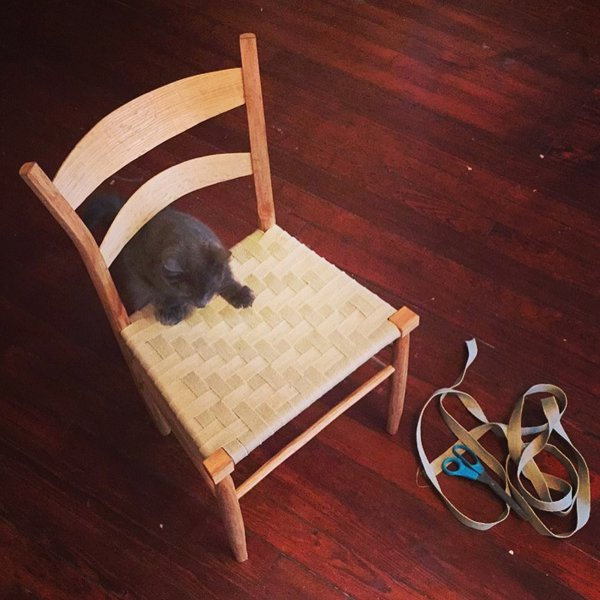
Fitzpatrick’s cat JJ climbs on a variation on the Jennie Alexander ladder-back chair. Lost Art Press posthumously published Alexander’s Make a Chair from a Tree: Third Edition in 2021.
